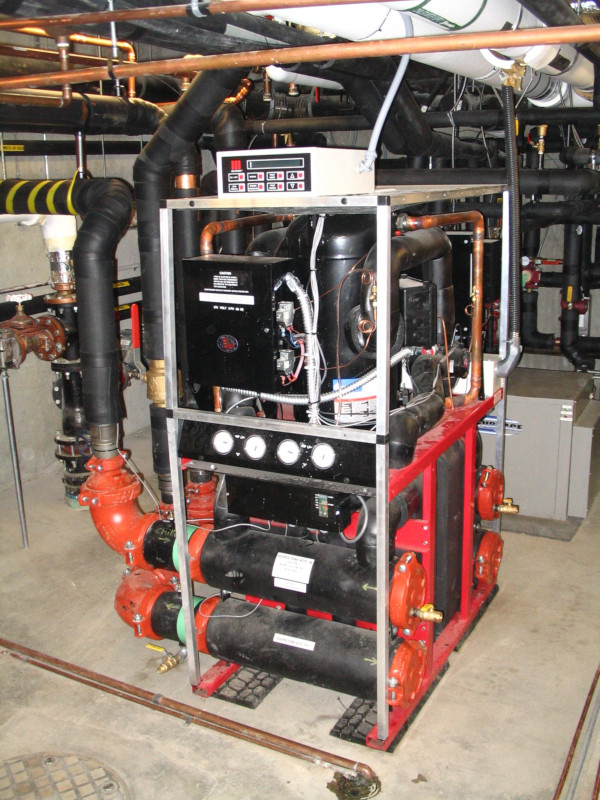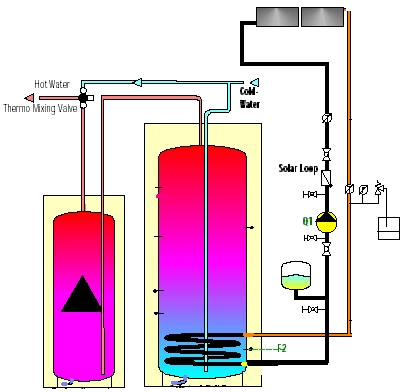A greener home or business powered by the sun!
Reduce your personal carbon foot print and pave the way for the future with solar panels in the Okanagan.
With solar electric arrays becoming more and more affordable and options for various mounting arrays (roof or ground) there is a solution for your particular needs and budget! We give you honest and knowledgeable advice through our lengthy experience in the green energy sector.
You may not be the first but please don’t be the last!
Solar PV Electric for Your Home
Grid Tied:
Across Canada, home owners are adding solar electric panels to their roofs. They are doing this to save electricity and to reduce their power bills. They are choosing to use green energy over nuclear and coal.
Since solar electric prices have fallen dramatically over the past 5 years, solar systems are now affordable. It’s easier than ever to put solar to work on any home connected to the electrical utility grid with Swiss Solar Tech’s Grid-Tie Solar PV Systems. These complete packages combine the latest solar modules and the highest quality inverters for complete, reliable and fully compatible rooftop or ground mounted solution.
Off Grid:
Swiss Solar Tech also provides solar systems for off-grid homes and properties. We ensure our clients get the best quality, value and the newest technologies solutions they need. The Off-Grid Solar Systems shown on our website are just a few examples of system choices.
Typically, a solar system is custom designed to match your needs. Factors that are considered are total electrical consumption, location, exposure and budget.
Solar Water Heating for Your Home
In an indirect active system, also known as “closed loop,” a simple circulation pump moves the non-toxic and food safe antifreeze solution (propylene glycol) through a closed copper pipe loop into the solar collector, through the collector’s absorber pipes, and out of the solar collector. Then, the sun-warmed heat transfer fluid flows into a double walled heat exchanger where it warms the cold water heading into a conventional hot water tank. The antifreeze solution then returns to the pump and again flows into the solar collector without ever mixing with the building’s water. Indirect systems are encouraged in climates with extended periods of below-freezing temperatures for year-round solar heating.
In reality, indirect systems are somewhat more complicated than presented here. Differential thermostats, pumps, sensors, and controls are used so the simple systems illustrated work effectively and safely. However solar thermal technology is mature and proven with few maintenance requirements from the installed systems.
Collecting the Sun
Solar thermal systems also differ by the type of collector used to gather and store the sun’s energy. Flat plate collectors are the simplest and most common type. Copper pipes wind back and forth through the flat plate collector, which is painted black to absorb heat and covered with glass, or “glazing,” to prevent heat from escaping. Often the pipes are painted black and bonded to the material of the flat plate collector to maximize heat absorption.
A standard two panel solar water heating system (solar thermal system) will cover 60 to 75% of their hot water heating requirements as shown in the professional output report posted below. In addition, a solar water heating system can be expanded at any time to support radiant heating and pool heating. This will allow even more use of free energy generated from the sun.
Solar panels in the Okanagan are becoming more and more affordable with lower material costs and higher efficiency panels and inverters.
You can easily access and monitor real-time data on your array from your smart phone or desktop.
The Okanagan Valley is ideal for Solar Power Production.
From consultation, through quality installation and maintenance, we offer the expertise to realize significant cost savings that let you increase your profitability. Operation and maintenance costs are exceptionally low giving you an amortization period of 7-11 years.
Reduce your carbon footprint and let your business benefit from being seen as a leader in reducing greenhouse gas emissions.
Solar PV Electric for Your Business
Owners of businesses and managers who want that step up from other businesses will really benefit from renewable energy. If the business wants to make a statement and show a large commitment to renewable energy and sustainability, give some thought to these systems. There are an ever-increasing number of businesses wanting to display a willingness towards environmental responsibility. This displays a leadership in new incentives and new technologies, making this step seem so natural for future businesses.
Solar Photovoltaic is one of the most durable renewable energy systems in the Canada today. There are no moving parts and most solar PV modules have a 25-year warranty. The solar electricity can be used for any commercial, public or institutional building and the solar electricity that is generated by the sun, but not used by the buildings energy consumption and be fed back into the utility grid and used as a credit during night time. This is called a grid-tied solar PV system and it can also be used to store electricity to be used as back-up power during power outages.
We will assist you to design, within your budget, a clean energy energy system that will help lower your operating costs and provide a unique marketing opportunity for your operation.
Solar Heat Recovery for Your Business
Waste heat recovery is an exciting renewable energy technology. Waste heat recovery units are an energy recovery heat exchanger that recovers heat from hot streams, such as, cooling towers, or air conditioners, drain water, sewers and diesel generators. Waste heat recovery units add to the efficiency of building energy needs, decreasing the cost of fuel and energy consumption, as well as dramatically reducing thermal and air pollution, since most of the energy is recycled.
In addition there is much energy loss in traditional methods through transmission and extra transport equipment required, estimated to be up to around 66% loss in electricity value. There is much less energy wastage when you are using your onsite resources through modern heat recovery methods. This has a big impact on the environment.
The best heat source for waste recovery is water, either drain water or ground water from a well, river or lake. Hotels, multi-residential buildings, public pools and hospitals are all large quantity users of water, and waste or drain water can be recycled back into the heating system. Waste water is piped to waste heat recovery units which recover the energy and divert it back into building energy.
Other waste heat recovery sources can come from commercial kitchens. The commercial kitchens of fast food restaurants like Tim Horton’s, MacDonalds, Burger King, Wendy’s, etc. are also successful sources for a waste heat recovery system.
Pool Heat recovery is the most common waste heat recovery system. Swiss Solar Tech has a special hybrid system design that is able to collect virtually all the wasted heat from exhaust air and waste water. Pools can be heated virtually 80% – 90% by waste heat recovery methods, with minor energy backup. Contact us for details.
Pool heat recovery will be one of the next generation heat-reclaim systems used to bring the heat back into the building instead of draining it into the sewer or blowing warm air out of the building into the atmosphere.
All of these hybrid systems have great Co2 savings, since no natural gas is used. See our waste heat recovery projects at right. Contact Swiss Solar Tech for a site analysis, and to design a waste heat recovery system that maximizes your property’s natural heat resources.
Solar DHW for Your Business
By installing solar domestic hot water heating system many hotels for instance have uses less fossil fuel, prevents hundreds of tons of carbon dioxide going into the atmosphere annually, and attracts media attention and environmentally conscious guests. The system also pays for itself in 5 years by energy savings. Solar DHWH systems are even more economical if combined with indoor or outdoor pool hearting for hotels, motels, resorts and public pools. From May to September, when hotels are fully booked, the solar system has the largest capacity to heat water, therefore, the solar heating season and the accommodation industry in the Okanagan are perfectly mirroring each other.
Become a community leader in reducing greenhouse gas emissions. Alternative energy rebates or financing may be available. Contact us for a site consultation and free solar evaluation.









